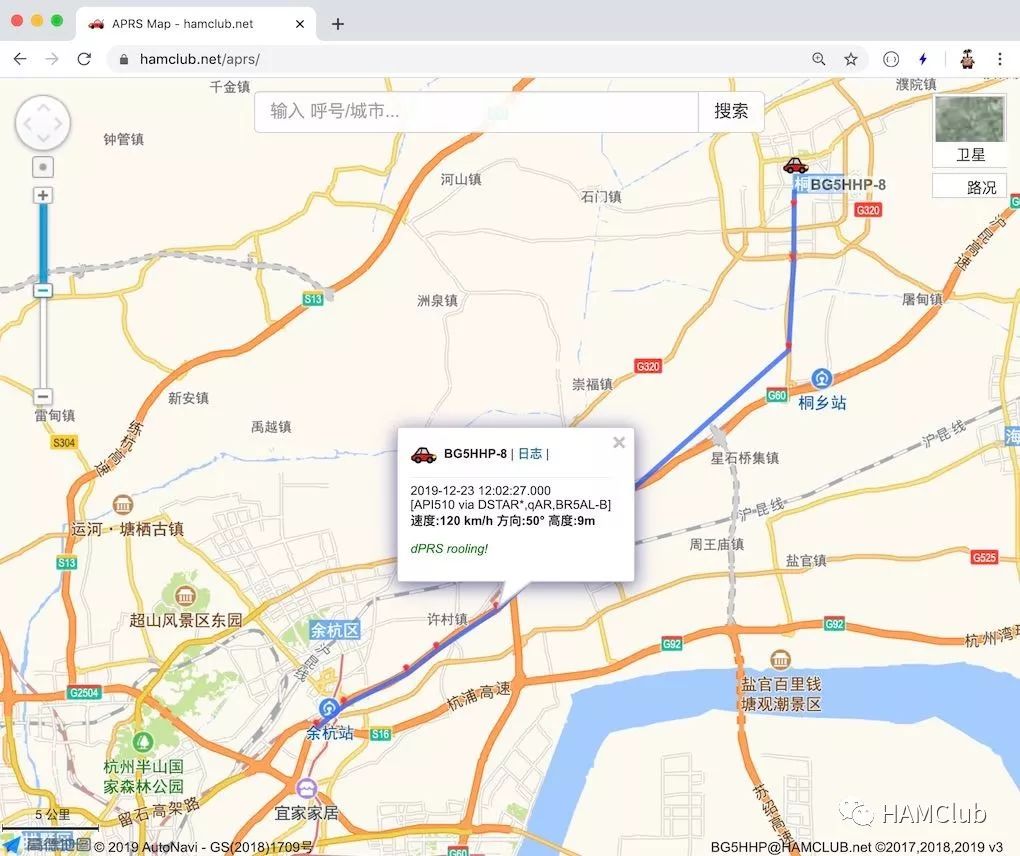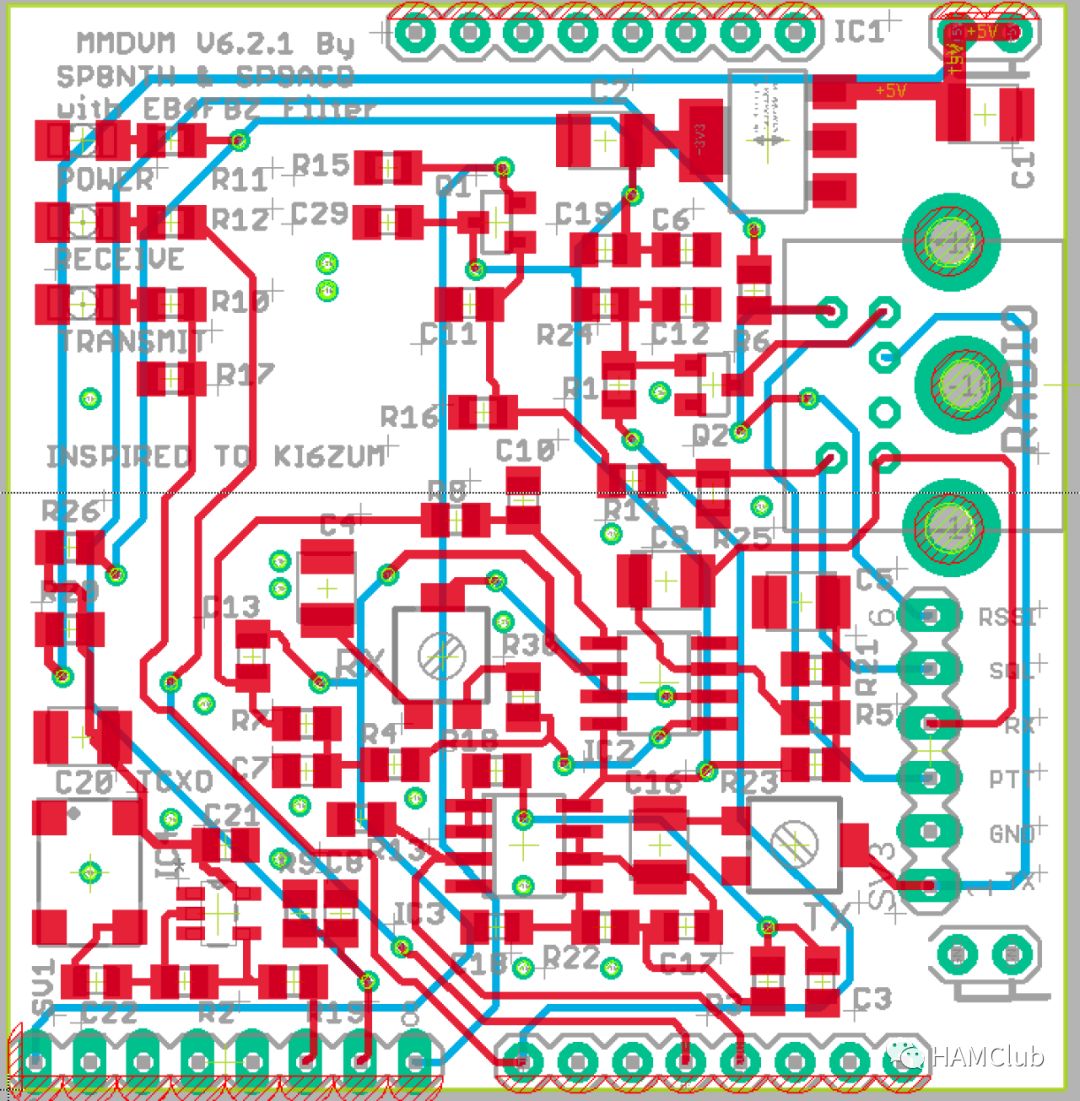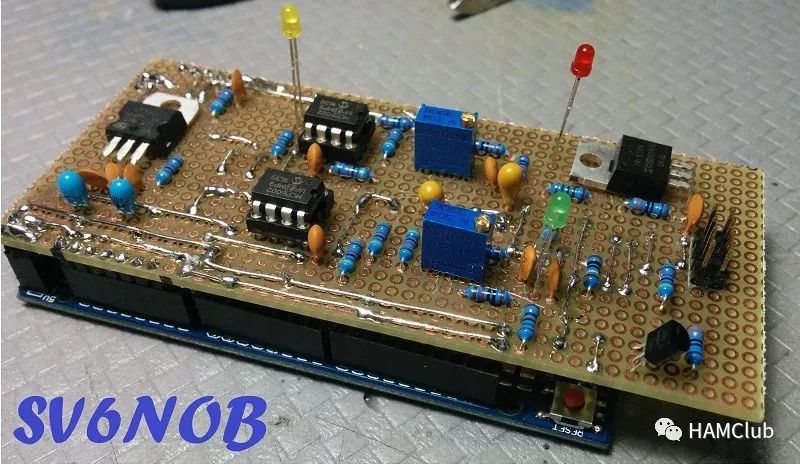The weather has turned cold. Just like someone sang, “In the southern town, the rainy winter is (colder) than in the north.” On a cold winter day, having a bowl of braised lamb is wonderful. So, I specially drove 70KM to Tongxiang for some meat today, while testing Hangzhou’s BR5AL.
As expected, around 60KM away, due to the distance and my car’s pig tail antenna not receiving well, the M8668 could no longer connect to Hangzhou’s DMR repeater. Fortunately, the repeater supports dual modes, so my ID5100 could effortlessly continue to connect using DStar mode.
Everyone can check the driving track transmitted by the ID5100 via DPRS on the map.

You may wonder why the same repeater, with the same RF front end, can’t connect using DMR but has no issues with DStar? Obviously, this relates to the characteristics of the two digital modes, and I will analyze the reasons for you when I have the chance.
Hangzhou’s BR5AL is registered on BM, with a non-famous ID460501. For a long time, this lonely repeater has been hanging on the BM network, daily forwarding signals from 91 and 46001, tortured by those long and boring voice signals. Yes, the chats on TG91 are quite tedious, if you can understand them.
Surprisingly, after half a year, the repeater is still doing well. This repeater is Hangzhou’s BR5AL, a creation of teacher BG5HXE.
I still remember at the beginning of 2018, teacher BA5AC gave me a piece of NTH board, so I found an Arduino Due, downloaded and compiled the firmware, and flashed it to run. This was also my first contact with the MMDVM project.

SP8NTH’s Arduino repeater board
However, things were clearly not that simple; I had only managed to get the software stack running, and I still needed a machine. Then teacher BG5HXE came down from the sky and offered to build a unit to test on the mountain. A few days later, I saw a miraculous repeater appear before me.
It was a monster using a GP88 for reception, with a 25W Kenwood radio of an unknown model for transmission, plus a router board I provided running OpenWrt, mixed together. Coupled with a second-hand aluminum case, it made my heart race. However, behind this unassuming system, it had excellent transceiver performance and was extremely durable. This relied entirely on teacher BG5HXE’s superb craftsmanship, as well as the unique geographical location of the mountain.

Images are randomly found, mainly to let you feel the difference in style from that MOTO repeater.
At the same time, this should be the earliest digital repeater running OpenWrt in China, with stability far exceeding that of Raspberry Pi’s TF card and lower heat generation. Later, every time I saw others’ Raspberry Pi treasures with a fan, I found it amusing; 90% of the Raspberry Pi’s resources are wasted on PHP scripts, they probably don’t know what this fan serves for those useless operations. Later, I opened part of the OpenWrtFeeds on GitHub, and it was already a year later that someone forked it.
I remember being very excited and posted screenshots of the transmission and reception decoding rates on Twitter, and foreigners came to like it. However, the bit error rate is just one indicator; from front to back, from software to hardware, from the main control board to the antenna feed system, this is a complete system engineering project. Fortunately, we have plenty of time; allow me to elaborate slowly in the future.
Well, thank you for your interest in reading to the end. If you happen to think it’s good, please help to share.
http://hamclub.net/dv/ Looking forward to more HAMs getting involved.
Cheers,
BG5HHP